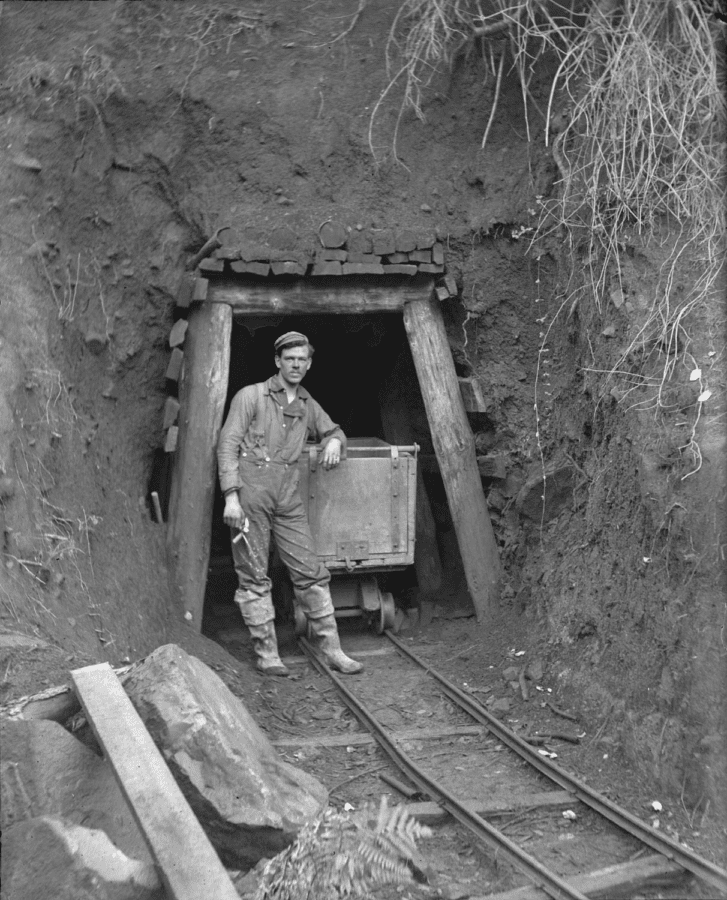MONMOUTH’S MIRACULOUS MINING RESCUE OF 1891
One of Monmouth’s most successful early industries was the Monmouth Mining & Manufacturing Company, which operated between 1873 and 1920 near the current site of the city waste transfer plant on North Eleventh Street.
Commonly known as the “3M” plant, he business got an unlikely start in 1869 when a Monmouth College classics professor interested in coal prospecting discovered a vein of coal, 45 feet below the surface. As the mine went deeper, he came across a stratum of very fine clay at 85 feet. A barrel of clay was shipped to Ohio for analysis and was pronounced the finest quality tile clay ever found. At that point, the coal mine turned into a clay mine, and a factory was built to produce sewer tiles, which were shipped to cities across the country.
By 1891, the factory had grown extensively and employed a workforce of 300. On Saturday afternoon, June 28, 13 men were laboring in the mine. They were working 50 yards south and 350 yards west of the main shaft, which was 100 feet deep. Fifty feet to the north of the main shaft was an old unused shaft which contained a large furnace, used to help circulate air throughout the mine. Suddenly, the engine house at the top of the main shaft and nearby wooden structures were ignited by gas from the furnace. Blasting powder and caps stored above the shaft also ignited, causing a large explosion. The main shaft filled with fire and smoke, driving the men to the furthest recesses to avoid suffocation.
When he heard the explosion in town, a police officer named Christy Foley, who had previously worked in the mine, hurried to the site with William Johnson, another former miner. Within minutes, Foley led a party of six rescuers down the old shaft. Following a passage to the main shaft, they used picks and spades to tunnel toward the trapped miners. As fire and timbers fell down the shaft, they were driven back a dozen times, but finally succeeded in digging through a barrier of six feet of clay to reach the miners.
After pulling the foreman to safety, the rescuers had difficulty making themselves heard to the other victims over the roar of the furnace. Foley went back to get a hose and extinguished the fire in the furnace. Returning to his companions, he was told that the shaft had caved in and all communications had been cut off. Noting that his torch was still burning, he realized there was still a current of air, so he directed his party to continue digging through the rubble
On hands and knees, choking from heat and smoke, the trapped men crawled over the furnace where the fire had started and one by one were carried by rescuers to the old shaft and up to welcome sunshine.
Upon hearing of the accident, the wives and children had hurried to the mine, where they waited anxiously for 90 minutes as the rescue unfolded. Police officer Nathan Coons, who was on duty, commented that he had never seen a crowd of women behave so bravely under such circumstances.
A small mule, used to pull the clay car, had to be abandoned in the mine, but miraculously it was rescued alive the following evening.
There was little time, however, for celebration or reflection, as a crew began digging a new shaft on Monday.
The Warren County Democrat used the occasion of the accident to editorialize on the lack of city support for the fire department, which seems to have received criticism for being late to the fire:
“Because the engine or hose carts are sometimes slow in getting to fires is no fault of the officers in charge,” the Democrat wrote. “The city pays nothing for the service of the members of the company and should not ask too much service without remuneration. When the hook and ladder wagon or the engine starts out none but hose in charge are entitled to seats, and besides, should the vehicles be broken down you would not likely chip in to pay the damages…The city council could do no more worthy act than to make suitable provisions for members of our worthy fire companies.”
In the days before OSHA, industrial accidents were all too frequent. Less than a year prior to the fire, a wreck of the fast mail train occurred at the plant, due to a thrown switch, causing four injuries and one death. Four days later, two workers were crushed when they were standing in a tempering pan loading clay into the elevator and the machinery accidently started. Then another train wreck took four lives at the factory four months after the fire. The plant itself would be destroyed by fire in 1920.
It seems miraculous that 13 men trapped by fire 100 feet underground all escaped unscathed.
For Maple City Memories, I’m Jeff Rankin.














